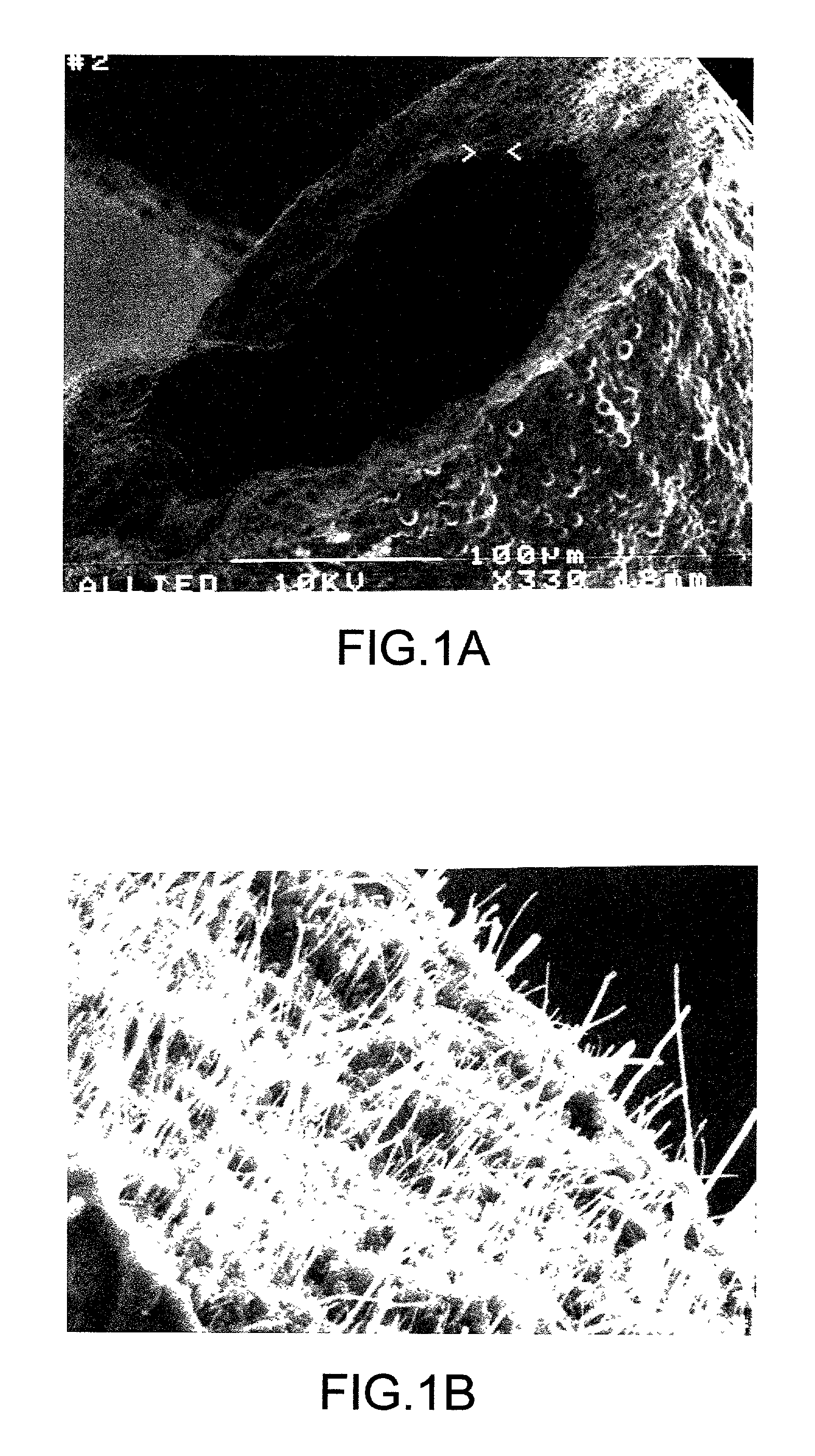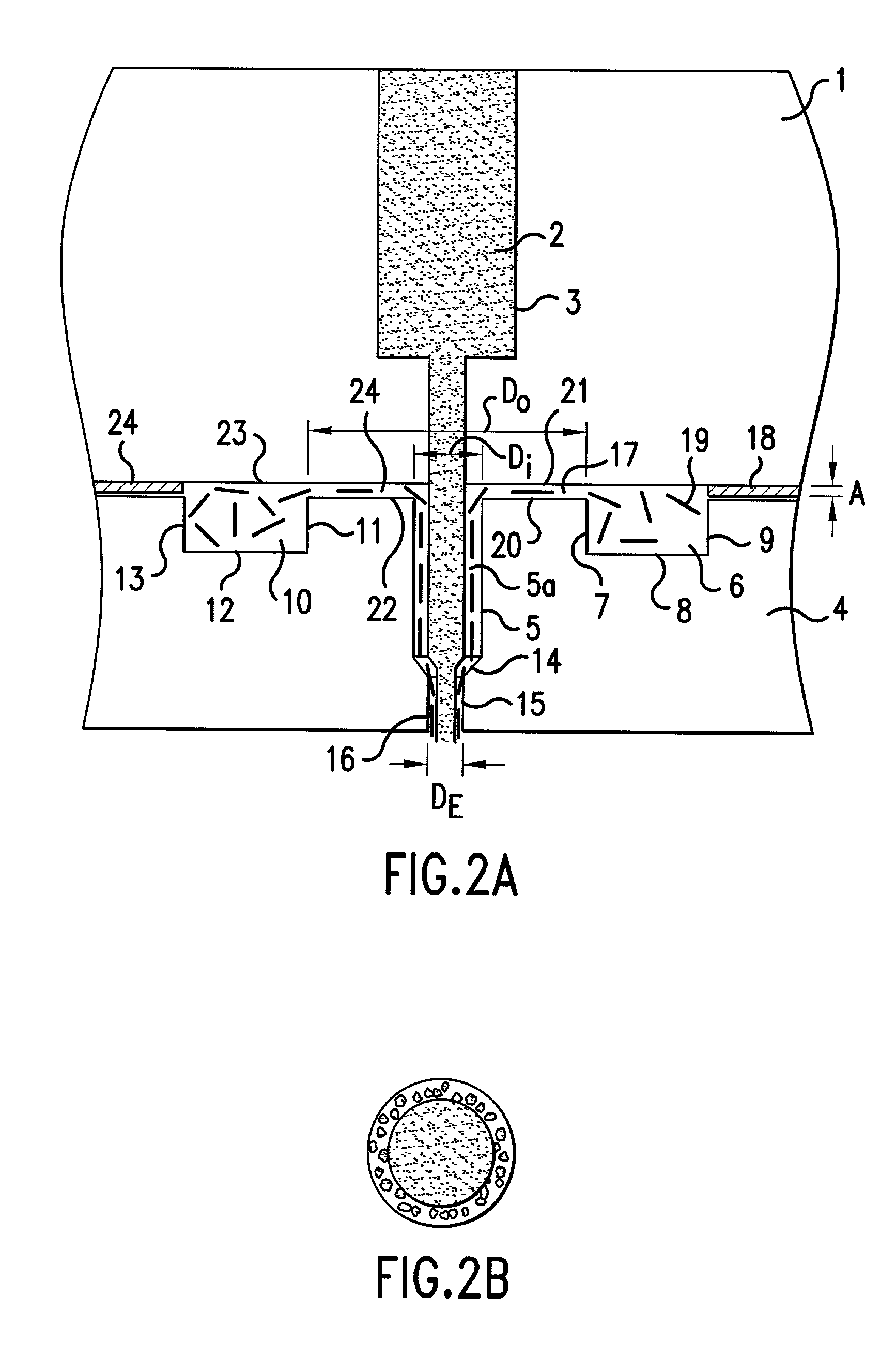Composite material comprising oriented carbon nanotubes in a carbon matrix and process for preparing same
a technology of carbon nanotubes and composite materials, which is applied in the direction of butter manufacturing, filament/thread forming, and nanostructure manufacturing. it can solve the problems of cs process fibers not being useful in applications, no methods are available for the manufacture of nanotube articles, and impede the development of applications
- Summary
- Abstract
- Description
- Claims
- Application Information
AI Technical Summary
Problems solved by technology
Method used
Image
Examples
example
(5)
[0081] A total of 6 samples prepared by the method of Example 4 were densified through a CVD process and were mechanically tested.
[0082] Using Instron 5565 with a sensitive 2.5N load cell, the sections of the fiber were tested by 3-point flex method using the following parameters:
[0083] Selected beam span--0.25 in
[0084] Cross head speed--0.1 in / min
[0085] The results are provided in the table below. The results in the table below were prepared taking into consideration the following factors. First, the measured nominal external fiber diameter D=0.015 in. Second, the fiber was hollow, with an internal to external diameter ratio of approximately 0.56. Third, the upper crust of the fiber is CVD material only, and does not contribute to the flex resistance, so one has to reduce the outer fiber diameter in the calculation. Using the micro-graphs this reduction was estimated by a factor of 0.9.
PUM
| Property | Measurement | Unit |
|---|---|---|
| diameters | aaaaa | aaaaa |
| pH | aaaaa | aaaaa |
| tensile strengths | aaaaa | aaaaa |
Abstract
Description
Claims
Application Information
 Login to View More
Login to View More - R&D
- Intellectual Property
- Life Sciences
- Materials
- Tech Scout
- Unparalleled Data Quality
- Higher Quality Content
- 60% Fewer Hallucinations
Browse by: Latest US Patents, China's latest patents, Technical Efficacy Thesaurus, Application Domain, Technology Topic, Popular Technical Reports.
© 2025 PatSnap. All rights reserved.Legal|Privacy policy|Modern Slavery Act Transparency Statement|Sitemap|About US| Contact US: help@patsnap.com



